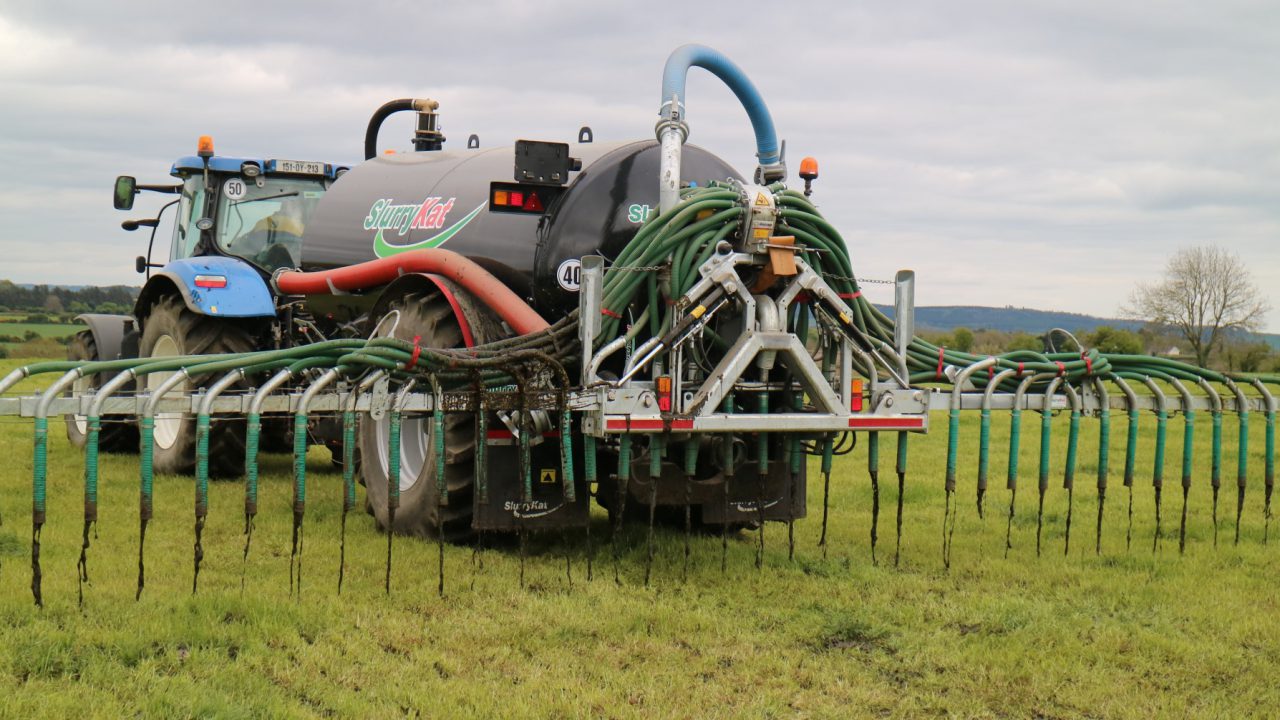Getting slurry tested to determine its nutrient value could go a long way in reducing the requirement for chemical fertiliser on many farms.
Teagasc has been conducting a number of farm walks focussed on clover, one of which was on the farm of Thomas and David Fennelly near Emo in Co. Laois.
At this walk, the importance of knowing what’s in slurry was highlighted to the farmers in attendance.
Knowing what is actually contained within this organic manure, potentially allows farmers to reduce the amount of chemical fertiliser required.
Slurry
Many farms have already spread slurry for first-cut silage, while others have had to delay spreading due to the weather.
To grow a first-cut silage crop about 80 units of nitrogen (N)/ac are generally required, but this doesn’t all have to be chemical N.
The slurry spread on silage fields will have a certain amount of N in it, for example using a 6% dry matter (DM) slurry at a rate of 3,000 gallon/ac will make up nearly all of the phosphorus (P) and potassium (K) requirements and a third, or 30kg of the N requirements.
This means urea, or protected urea and sulphur (S), can then be used for the remaining N requirements of 70kg/ha.
Although it may be too late for many to adjust the amount of chemical N spread for first cut, it could be adjusted for second cut and slurry could be used more on the grazing platform.
Soil samples
Knowing what is contained within organic manures also means that it can be used more effectively and targeted in the right parts of the farm.
Having soil samples available also means that farmers can then target the slurry at the right areas of the farm and increase soil fertility.
Increasing the soil indexes and fertility will mean that any chemical N that is spread is used to its fullest potential.
Slurry and farmyard manure are valuable nutrient sources on farms and should be used in a way that allows farmers to obtain the maximum gains from them.
